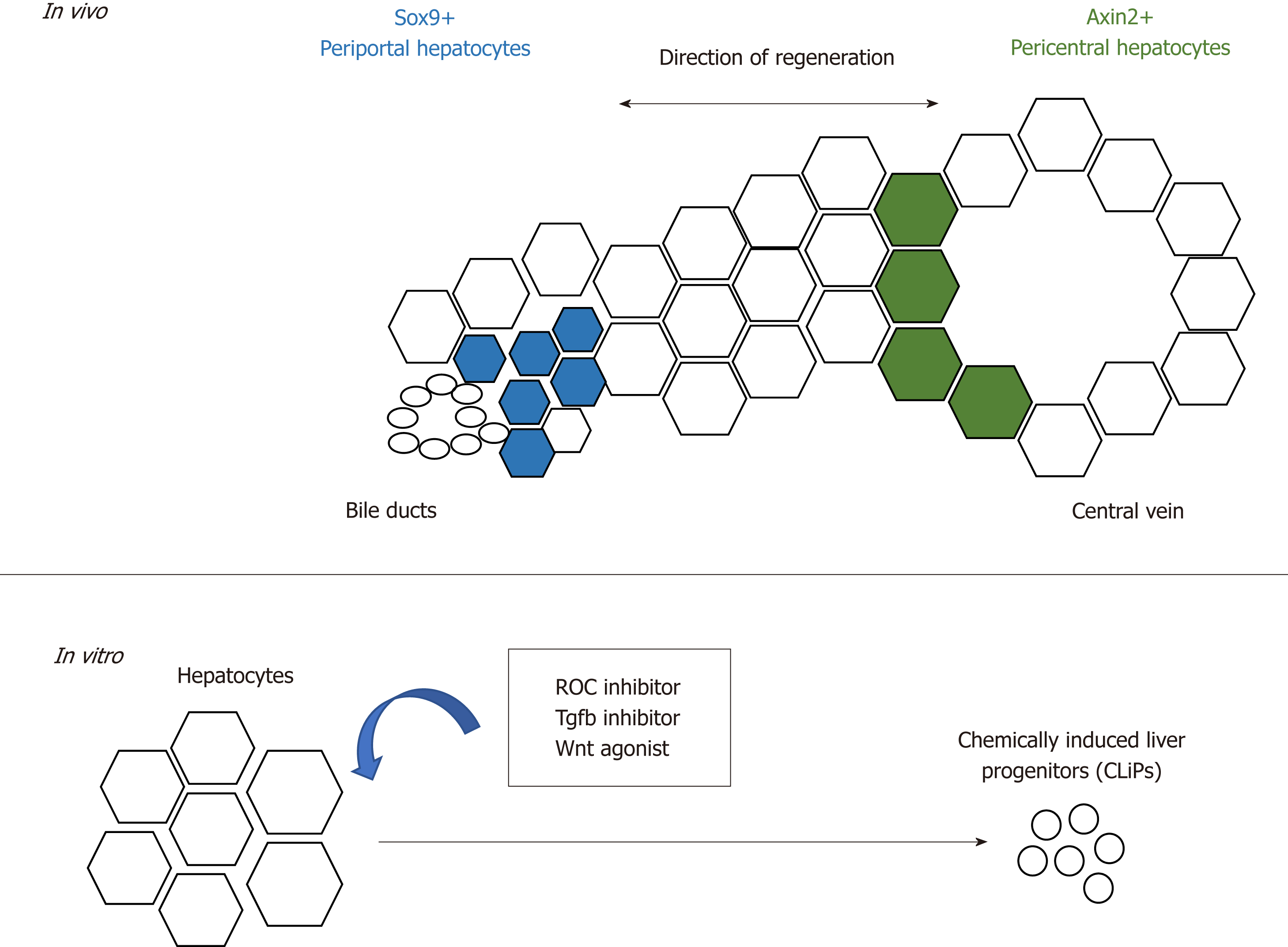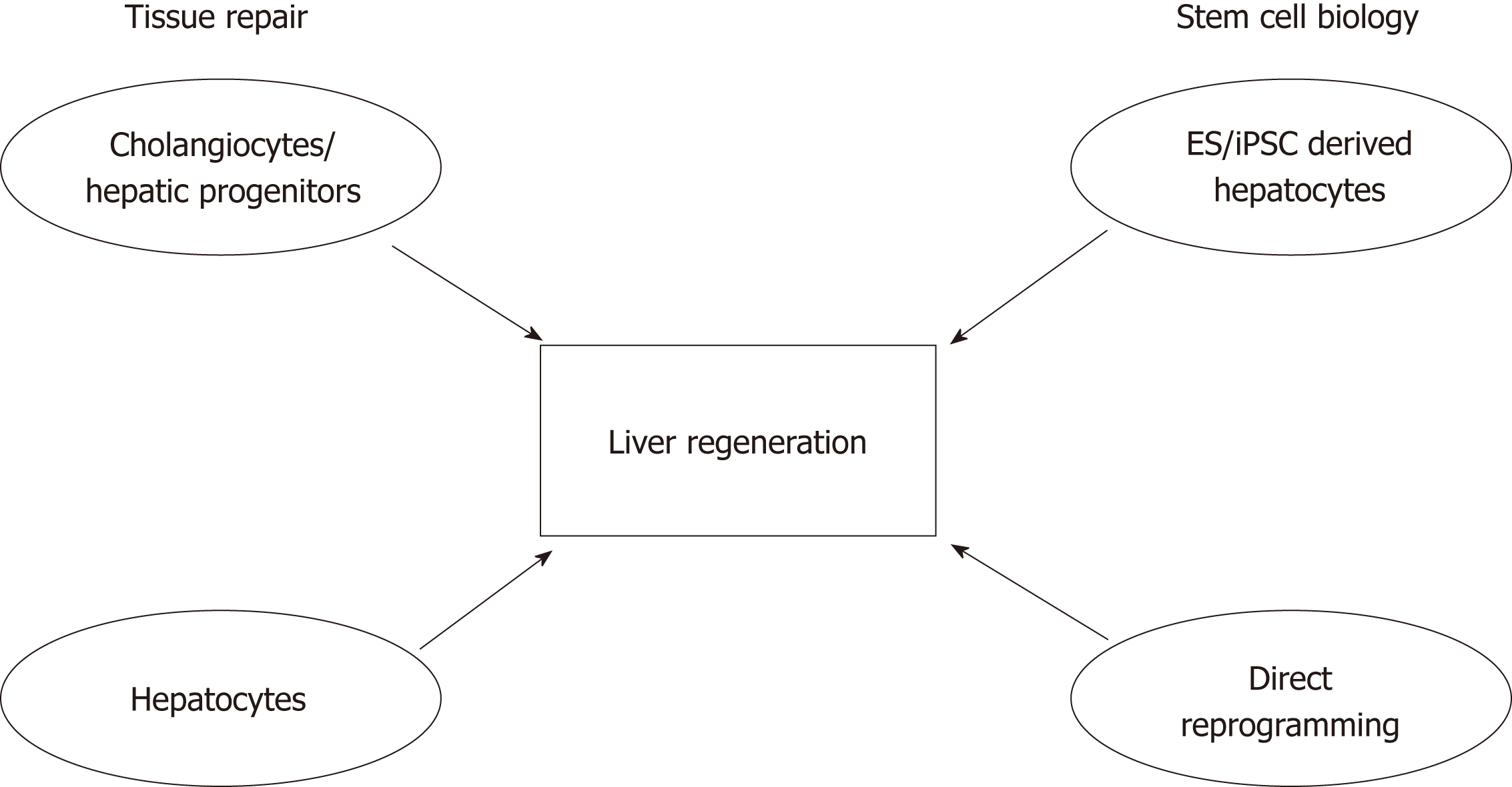Copyright
©The Author(s) 2019.
World J Gastroenterol. Mar 7, 2019; 25(9): 1037-1049
Published online Mar 7, 2019. doi: 10.3748/wjg.v25.i9.1037
Published online Mar 7, 2019. doi: 10.3748/wjg.v25.i9.1037
Figure 1 Schematic summarising potential non-hepatocyte sources of regeneration.
Lineage-tracing models using Cre recombinase controlled under a cholangiocyte-specific promoter have shown cholangiocytes giving rise to hepatocytes. Alternatively, Sox9+ hybrid hepatocytes have been shown to give rise to both cholangiocytes and hepatocytes.
Figure 2 Schematic summarising the regenerative potential of hepatocytes.
In vivo, periportal and pericentral hepatocytes regenerate the liver with different regenerative mechanisms. In vitro, hepatocytes can be converted into liver progenitors with extrinsic factors.
Figure 3 Schematic showing the importance of understanding tissue repair and stem cell biology, and their contributions to developing future therapies to promote liver regeneration.
Studies focusing on understanding the mechanisms of tissue repair have suggested that cell populations with high cellular plasticity include both cells of the biliary tree and hepatocytes. The fields of stem cell biology and regenerative medicine have used signals and key factors required during embryonic development to produce hepatocyte-like cells derived from either adult or embryonic sources. In conjunction, these will advance the liver regeneration field.
- Citation: Tsuchiya A, Lu WY. Liver stem cells: Plasticity of the liver epithelium. World J Gastroenterol 2019; 25(9): 1037-1049
- URL: https://www.wjgnet.com/1007-9327/full/v25/i9/1037.htm
- DOI: https://dx.doi.org/10.3748/wjg.v25.i9.1037











